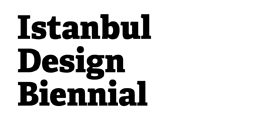NCR-04 Horoscope; Murat Güvenç puts forward a proposition to create a “Choreoscope” that foretells the spaces of the future.

Should this newspaper with the city as its main agenda also include a horoscope section? If your answer is affirmative, then how should the content be created? If you are saying “no”, then how would you justify this attitude? I was puzzled at the editor’s questions for this issue. Because as its very name implies, in a “horoscope” which orientates itself with the perception and apprehension of time, there are very few indications of place and instead many chronological references such as “in two measures of time”, “before winter arrives” or “on a summer day” etc. Despite its irrationality, as the well-known proposition about Time – which has successfully defied the storms and tribulations of the Modernity project – swallowing Place suggests, when the attributes of Time are laid down, everything becomes much clearer. We can actually do without Place. This approach is not entirely unjustified when we consider the unequal development of these two concepts, Time and Place. When Time has proven very efficient, through its use of fairy tales, stories, super-narratives and utopias, in transcending local limitations, namely Place, and transporting society and sociology to a placeless wonderland, spatial imagination (excepting such examples as “doors were locked and the place wept…”) has been full of shallow, obvious, dry and infertile tongue-twisters and rhymes. Consequently, whilst horoscopes foretelling the future were created, noone thought of producing a (C)horeoscope indicating places of the future. So I thought that the editor’s question should have been about a choreoscope as opposed to a horoscope. The problem regarding places of the future and the future of places brought me to the period when we used models of attraction. We used these models with the purpose of estimating and testing the distribution of population and employment in cities. When we reached the expected population figures through calibration, we considered our work accomplished. The question of whether the results were respectful of the local values or their fairness or the legitimacy of the technical solution would not be a concern of the final evaluation. Professional practice may sometimes neglect humanistic concerns, overshadowing alternatives and imagination. I remembered the times when we prepared data for such exploratory projects and how we amused ourselves with the phonetic similarity between the verbs “discard” (atmak) and “assign” (atamak) in the third person singular in Turkish.
These models are now a thing of the past, lost inside the general atmosphere of disappointment triggered by the modernity project. Together we experienced the political, cultural and economical transformations and their consequences in the period following this disintegration. We cannot assess the performance of the alternatives as they made no claims for constructing an alternative future. So it doesn’t make sense now to try and arrive at an evaluation. And as we don’t currently have a project that aspires to construct the future , it leaves us with only one source we can refer to regarding the places of the future: the (C)horeoscope!
Don’t worry, I am not going to propose that we go back to mechanistic models. We are now talking about brand new crystallizations (produced places) that are binding, contingent, and yet definitive and not fugacious, whereby the future is no longer removed from spatial contexts, or the context from social processes and which we cannot imagine in the form of extensions or screens. It is now understood that social spaces are formations that are too complex to be left in the hands of a single designer. Daring projects formed outside of a participatory process – regardless of their scale, theme, scope and location – are seen as a kind of professional deformation, a childhood disease. The participatory approach inviting the urban designer to assume a more modest position, considers interventions to the public space from outside a participatory process as a fait accompli, an imposition that can only be possible and consistent in a totalitarian context. (C)horeoscope can only make sense in totalitarian political landscapes where little changes in the short term. In a context where places are formed as part of sociopolitical interactions, where the outcomes are dependent on the dedication and fighting power of the players involved and the final result is by no means foreseeable, counterfeit predictions of the (C)horeoscope would not be at all believeable. Because predictions that manage to arouse interest are never those that announce what is already known. So it would be much better to abstain from designing a (C)horescope section for this newspaper and instead focus our energies on the local problem pertaining to democracy that is currently not in place.









Leave a Reply